
|
Now it is 9.0 mag (Jan. 31, Seiichi Yoshida). It brightens up to 8 mag in spring, and it is observable in good condition in the Northern Hemisphere. In the Southern Hemisphere, it is not observable until July.
Date(TT) R.A. (2000) Decl. Delta r Elong. m1 Best Time(A, h)
Feb. 8 2 9.70 58 31.7 1.659 1.985 93 8.9 20:35 (154,-14)
Feb. 15 2 6.37 59 13.2 1.689 1.934 88 8.9 20:26 (153,-16)
|
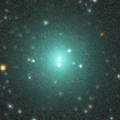
|
Now it is very bright as 10.9 mag (Jan. 31, Seiichi Yoshida). It stays 11 mag until February. In the Northern Hemisphere, it stays observable in good condition after this. It is not observable in the Southern Hemisphere.
Date(TT) R.A. (2000) Decl. Delta r Elong. m1 Best Time(A, h)
Feb. 8 18 34.93 39 2.6 1.024 1.111 67 11.0 3:52 (234,-17)
Feb. 15 19 1.11 52 5.9 0.942 1.171 74 11.1 4:01 (221,-22)
|

|
Now it is bright as 11.4 mag (Jan. 31, Seiichi Yoshida). It approaches to Sun down to 0.84 a.u. in March, then it brightens up to 10 mag. In the Northern Hemisphere, it stays observable for a long time, although it becomes extremely low in March. In the Southern Hemisphere, it is not observable until June when it fades down to 13 mag. It seems to be a fragment of C/1988 A1 (Liller), like C/1996 Q1 (Tabur) and C/2015 F3 (SWAN).
Date(TT) R.A. (2000) Decl. Delta r Elong. m1 Best Time(A, h)
Feb. 8 23 47.01 -0 17.6 1.650 1.072 38 11.4 20:35 ( 90, 0)
Feb. 15 23 50.10 5 16.1 1.636 0.999 34 11.1 20:26 ( 93, -6)
|

|
Now it is 12.4 mag (Jan. 29, Maik Meyer). It stays bright as 12-13 mag until summer. But it becomes low in spring. In the Southern Hemisphere, it will never be observable again.
Date(TT) R.A. (2000) Decl. Delta r Elong. m1 Best Time(A, h)
Feb. 8 23 40.72 43 13.3 3.507 3.242 66 12.3 20:35 (127,-24)
Feb. 15 23 45.28 44 15.1 3.590 3.260 62 12.4 20:26 (127,-27)
|

|
It brightened in outburst on Feb. 3. Now it is bright as 12.0 mag (Feb. 4, Bob King). It will be unobservable soon in the Southern Hemisphere.
Date(TT) R.A. (2000) Decl. Delta r Elong. m1 Best Time(A, h)
Feb. 8 0 45.98 13 54.4 6.250 5.788 57 13.7 20:35 (110, 4)
Feb. 15 0 50.28 14 14.7 6.343 5.789 52 13.7 20:26 (108, 1)
|
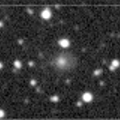
|
Now it is bright as 13.8 mag (Dec. 28, Chris Wyatt). It stays 14 mag until spring. It stays observable for a long time in the Southern Hemisphere. It is not observable until August in the Northern Hemisphere.
Date(TT) R.A. (2000) Decl. Delta r Elong. m1 Best Time(A, h)
Feb. 8 0 53.35 -67 1.2 3.850 3.494 61 14.2 20:35 ( 29, 38)
Feb. 15 1 4.86 -64 11.7 3.875 3.506 61 14.2 20:26 ( 32, 38)
|

|
In the Southern Hemisphere, it is observable at 14.5 mag from winter to spring. In the Northern Hemisphere, it is not observable until August when it fades down to 17 mag.
Date(TT) R.A. (2000) Decl. Delta r Elong. m1 Best Time(A, h)
Feb. 8 23 48.13 -70 44.7 2.324 2.014 59 14.4 20:35 ( 24, 33)
Feb. 15 0 40.52 -67 13.3 2.299 2.013 60 14.3 20:26 ( 28, 36)
|
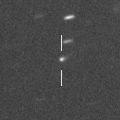
|
Now it is 16.2 mag (Feb. 2, C. Bell). It will brighten up to 13.5-14 mag from 2020 to 2021. It stays observable in good condition for a long time after this until 2020 summer.
Date(TT) R.A. (2000) Decl. Delta r Elong. m1 Best Time(A, h)
Feb. 8 13 17.05 12 57.7 2.814 3.457 123 15.1 3:52 (185, 42)
Feb. 15 13 17.30 13 29.4 2.722 3.440 129 14.9 3:41 (180, 42)
|

|
Now it is 14.1 mag (Jan. 12, Sandor Szabo). It will be fading after this, and will be fainter than 18 mag in May. In the Northern Hemisphere, it is observable in excellent condition. It locates low in the Southern Hemisphere.
Date(TT) R.A. (2000) Decl. Delta r Elong. m1 Best Time(A, h)
Feb. 8 4 2.32 16 45.5 1.051 1.600 103 15.2 20:35 (150, 33)
Feb. 15 4 18.69 15 46.3 1.114 1.612 100 15.4 20:26 (149, 33)
|
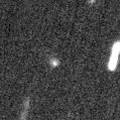
|
Now it is 15.6 mag (Jan. 4, Toshihiko Ikemura, Hirohisa Sato). It will brighten up to 10.5 mag from 2020 December to 2021 January. In the Northern Hemisphere, it stays observable in good condition while the comet will be brightening gradually, but it is not observable at the high light. In the Southern Hemisphere, it is not observable for a long time, but it will be observable in good condition after the high light.
Date(TT) R.A. (2000) Decl. Delta r Elong. m1 Best Time(A, h)
Feb. 8 18 27.64 62 37.1 3.868 3.909 85 15.4 3:52 (211,-27)
Feb. 15 18 33.27 63 36.1 3.795 3.845 85 15.2 4:01 (208,-24)
|

|
Now it is 14.6 mag (Dec. 28, Chris Wyatt). It will be fading slowly after this. In the Southern Hemisphere, it becomes low from February to March, but it stays observable for a long time. In the Northern Hemisphere, it is not observasble until June.
Date(TT) R.A. (2000) Decl. Delta r Elong. m1 Best Time(A, h)
Feb. 8 22 53.66 -47 32.8 4.258 3.524 37 15.6 20:35 ( 44, 17)
Feb. 15 23 1.15 -45 43.9 4.307 3.555 35 15.6 20:26 ( 44, 15)
|
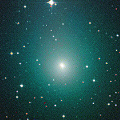
|
It brightened up to 8.3 mag in September (Sept. 20, Maik Meyer). Now it is fading. It has already faded down to 14.9 mag (Dec. 28, Chris Wyatt). In the Southern Hemisphere, it stays observable for a long time after this. In the Northern Hemisphere, it will never be observable again.
Date(TT) R.A. (2000) Decl. Delta r Elong. m1 Best Time(A, h)
Feb. 8 22 46.43 -48 15.4 3.253 2.537 37 15.6 20:35 ( 42, 17)
Feb. 15 22 55.89 -48 45.7 3.311 2.607 38 15.8 20:26 ( 41, 16)
|

|
It brightened up to 7.7 mag in June in 2018 (June 19, Juan Jose Gonzalez). Now it is fading. It has already faded down to 14.7 mag (Dec. 31, Toshihiko Ikemura, Hirohisa Sato). In the Southern Hemisphere, it stays observable for a long time until the comet will fade out. In the Northern Hemisphere, it stays low for a while.
Date(TT) R.A. (2000) Decl. Delta r Elong. m1 Best Time(A, h)
Feb. 8 5 36.45 -26 47.2 5.504 5.925 110 15.6 20:35 (164, 81)
Feb. 15 5 33.87 -25 31.8 5.624 5.980 106 15.7 20:26 (143, 78)
|
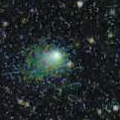
|
Now it is 15.6 mag (Jan. 7, Hidetaka Sato). Fading slowly. It is already unobservable in the Southern Hemisphre. It will be unobservable in early March also in the Northern Hemisphere.
Date(TT) R.A. (2000) Decl. Delta r Elong. m1 Best Time(A, h)
Feb. 8 23 45.29 -4 13.3 2.719 2.015 36 15.6 20:35 ( 87, 2)
Feb. 15 0 1.42 -2 52.0 2.792 2.047 33 15.8 20:26 ( 87, 1)
|
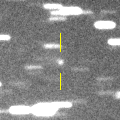
|
First return of a new periodic comet discovered in 2006. Now it is 14.9 mag (Jan. 21, R. Fichtl). It will brighten up to 15.5 mag in spring. But it is not observable around that time.
Date(TT) R.A. (2000) Decl. Delta r Elong. m1 Best Time(A, h)
Feb. 8 23 12.00 -11 27.9 2.590 1.766 26 15.8 20:35 ( 76, 0)
Feb. 15 23 30.65 -10 11.6 2.596 1.746 24 15.7 20:26 ( 77, -1)
|
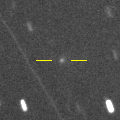
|
Now it is 16.0 mag (Feb. 7, Michael Mattiazzo). It moves along the same orbit as C/1844 Y1 (Great Comet). It approaches to Sun down to 0.25 a.u. on May 30. It is expected to brighten up to 5 mag. In the Northern Hemisphere, it stays observable in excellent condition until mid May when it brightens up to 9 mag. In the Southern Hemisphere, it will be unobservable soon.
Date(TT) R.A. (2000) Decl. Delta r Elong. m1 Best Time(A, h)
Feb. 8 11 45.46 45 48.9 1.520 2.344 137 16.1 2:37 (180, 9)
Feb. 15 11 37.53 49 41.9 1.409 2.238 137 15.7 2:02 (180, 6)
|
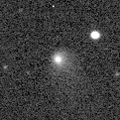
|
Now it is 14.8 mag (Dec. 28, Chris Wyatt). Fading slowly. It will be unobservable soon. It will appear in the morning sky in April in the Southern Hemisphere, or in June in the Northern Hemisphere.
Date(TT) R.A. (2000) Decl. Delta r Elong. m1 Best Time(A, h)
Feb. 8 23 27.32 -18 2.3 5.859 5.027 29 15.8 20:35 ( 73, 6)
Feb. 15 23 32.07 -16 52.5 5.943 5.062 24 15.8 20:26 ( 72, 3)
|
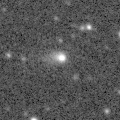
|
Now it is 14.9 mag (Jan. 20, Toshihiko Ikemura, Hirohisa Sato). It will fade out rapidly after this, and it will be fainter than 18 mag in late March. In the Southern Hemisphere, it is already unobservable.
Date(TT) R.A. (2000) Decl. Delta r Elong. m1 Best Time(A, h)
Feb. 8 23 40.23 6 54.6 2.531 1.894 40 15.9 20:35 ( 95, -5)
Feb. 15 23 56.02 8 58.4 2.594 1.916 38 16.2 20:26 ( 96, -7)
|

|
Now it is 15.3 mag (Jan. 5, Toshihiko Ikemura, Hirohisa Sato). It is expected to be observable at 5-6 mag for a long time from 2022 to 2023. In the Northern Hemisphere, it is not observable at the high light from 2022 summer to 2023 summer. In the Southern Hemisphere, it stays unobservable for a while. But it will be observable in good condition at the high light.
Date(TT) R.A. (2000) Decl. Delta r Elong. m1 Best Time(A, h)
Feb. 8 18 8.14 46 14.8 10.054 9.855 75 15.9 3:52 (225,-17)
Feb. 15 18 10.88 46 35.7 9.976 9.806 77 15.9 4:01 (221,-12)
|
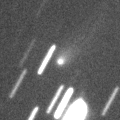
|
Now it is 16.2 mag (Jan. 21, Thomas Lehmann). The orbit is extremely hyperbolic with e=3.35. It is the first interstellar comet in history. It will be fading after this, and will be fainter than 18 mag in April. In the Southern Hemisphere, it is observable in excellent condition. In the Northern Hemisphere, it will never be observable again.
Date(TT) R.A. (2000) Decl. Delta r Elong. m1 Best Time(A, h)
Feb. 8 12 50.65 -58 19.2 2.129 2.424 95 16.0 3:42 ( 0, 67)
Feb. 15 12 54.98 -61 8.3 2.187 2.513 97 16.2 3:19 ( 0, 64)
|
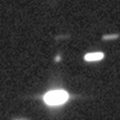
|
Now it is 16.2 mag (Feb. 5, C. Rinner, F. Kugel). It will brighten up to 13 mag in 2021. In 2020, it is observable at 15 mag in good condition from spring to summer.
Date(TT) R.A. (2000) Decl. Delta r Elong. m1 Best Time(A, h)
Feb. 8 15 1.59 -14 46.6 5.526 5.634 91 16.2 3:52 (241, 56)
Feb. 15 15 2.42 -15 18.1 5.368 5.591 97 16.1 4:01 (230, 63)
|

|
Now it is 16.3 mag (Jan. 19, Toshihiko Ikemura, Hirohisa Sato). It will be fading gradually after this. It will be fainter than 18 mag in April.
Date(TT) R.A. (2000) Decl. Delta r Elong. m1 Best Time(A, h)
Feb. 8 9 10.03 7 7.6 2.079 3.058 171 16.2 0:02 (180, 48)
Feb. 15 9 4.56 7 41.0 2.118 3.090 167 16.3 23:24 (180, 47)
|

|
It will be fading slowly after this. In the Southern Hemisphere, it stays observable in good condition for a long time. It will never be observable after this in the Northern Hemisphere.
Date(TT) R.A. (2000) Decl. Delta r Elong. m1 Best Time(A, h)
Feb. 8 14 10.85 -71 2.7 4.856 4.806 81 16.2 3:52 (351, 53)
Feb. 15 13 57.28 -72 37.2 4.825 4.850 85 16.3 4:01 (357, 52)
|
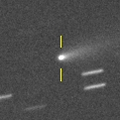
|
Now it is 15.6 mag (Jan. 22, Thomas Lehmann). It will fade out rapidly after this, and it will be fainter than 18 mag in March.
Date(TT) R.A. (2000) Decl. Delta r Elong. m1 Best Time(A, h)
Feb. 8 11 30.03 13 52.9 1.109 2.021 149 16.4 2:21 (180, 41)
Feb. 15 11 27.91 14 36.8 1.112 2.055 156 16.7 1:52 (180, 41)
|
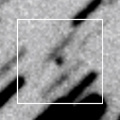
|
Now it is 16.5 mag (Dec. 27, Toshihiko Ikemura, Hirohisa Sato). It stays observable at 17 mag from 2020 to 2021. It locates somewhat low in the Northern Hemisphere.
Date(TT) R.A. (2000) Decl. Delta r Elong. m1 Best Time(A, h)
Feb. 8 10 56.64 -25 18.5 5.890 6.607 133 16.6 1:48 (180, 80)
Feb. 15 10 54.96 -25 9.1 5.829 6.603 138 16.5 1:19 (180, 80)
|
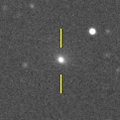
|
Now it is 15.5 mag (Jan. 20, Toshihiko Ikemura, Hirohisa Sato). It will be fading slowly after this.
Date(TT) R.A. (2000) Decl. Delta r Elong. m1 Best Time(A, h)
Feb. 8 1 24.83 4 15.6 2.636 2.356 62 16.6 20:35 (109, 17)
Feb. 15 1 36.78 5 37.1 2.713 2.363 59 16.6 20:26 (109, 15)
|
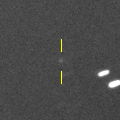
|
Now it is 17.2 mag (Feb. 2, C. Rinner, F. Kugel). It will brighten very rapidly after this. It will brighten up to 8-9 mag from summer to autumn. It will be observable in excellent condition in the Southern Hemisphere. It locates very low around the high light in the Northern Hemisphere.
Date(TT) R.A. (2000) Decl. Delta r Elong. m1 Best Time(A, h)
Feb. 8 13 37.82 -5 24.0 2.021 2.580 113 16.9 3:52 (198, 59)
Feb. 15 13 40.78 -5 33.4 1.894 2.536 119 16.6 4:01 (182, 61)
|

|
Now it is 17.7 mag (Feb. 2, D. Buczynski). It stays 16-17 mag for a long time until 2020. It is observable in good condition in the Northern Hemisphere. In the Southern Hemisphere, it is observable in the extremely low sky only in 2021 spring.
Date(TT) R.A. (2000) Decl. Delta r Elong. m1 Best Time(A, h)
Feb. 8 13 29.56 54 42.8 8.172 8.689 118 16.8 3:52 (184, 0)
Feb. 15 13 27.94 55 5.1 8.153 8.699 120 16.8 3:51 (180, 0)
|
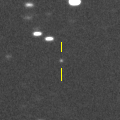
|
Now it is 17.2 mag (Feb. 2, D. Buczynski). It will brighten up to 16 mag in March, and it will be observable in good condition.
Date(TT) R.A. (2000) Decl. Delta r Elong. m1 Best Time(A, h)
Feb. 8 11 47.86 43 51.9 0.947 1.805 138 17.0 2:40 (180, 11)
Feb. 15 11 36.76 43 13.0 0.894 1.780 142 16.8 2:01 (180, 12)
|
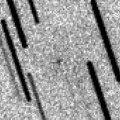
|
It approached to Earth down to 0.09 a.u. in early January, and it brightened up to 16.7 mag (Jan. 21, Toshihiko Ikemura, Hirohisa Sato). Now it is fading. Now it is 17.5 mag (Jan. 31, Ken-ichi Kadota). It is obesrvable in excellent condition in the Northern Hemisphere. It became observable also in the Southern Hemisphere.
Date(TT) R.A. (2000) Decl. Delta r Elong. m1 Best Time(A, h)
Feb. 8 9 14.61 47 31.7 0.225 1.183 147 16.8 0:06 (180, 7)
Feb. 15 9 26.16 42 19.4 0.281 1.239 150 17.3 23:47 (180, 13)
|
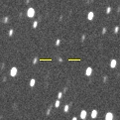
|
Now it is 16.7 mag (Dec. 3, D. Buczynski). It will stay at 14 mag for a long time from 2021 to 2022. In the Northern Hemisphere, it stays observable in good condition while brightening gradually. In the Southern Hemisphere, it is not observable until March.
Date(TT) R.A. (2000) Decl. Delta r Elong. m1 Best Time(A, h)
Feb. 8 19 5.31 29 40.4 7.380 6.876 55 16.9 3:52 (245,-17)
Feb. 15 19 7.91 29 46.5 7.313 6.842 58 16.8 4:01 (241,-11)
|

|
Fading. Now it is 17.2 mag (Dec. 28, Hidetaka Sato). It is observable at 17 mag in good condition in spring. But it will be fainter than 18 mag in June.
Date(TT) R.A. (2000) Decl. Delta r Elong. m1 Best Time(A, h)
Feb. 8 17 12.65 -7 36.9 3.069 2.743 61 17.0 3:52 (260, 26)
Feb. 15 17 22.52 -7 7.5 3.032 2.784 66 17.1 4:01 (255, 32)
|

|
Now it is 16.8 mag (Feb. 2, Catalina Sky Survey). It will brighten up to 16.5 mag and will be observable in good condition in March.
Date(TT) R.A. (2000) Decl. Delta r Elong. m1 Best Time(A, h)
Feb. 8 13 24.76 -1 19.4 1.476 2.126 118 17.1 3:52 (191, 56)
Feb. 15 13 29.04 -1 26.5 1.412 2.128 124 17.0 3:52 (180, 57)
|

|
Fading. Now it is 17.6 mag (Feb. 1, Catalina Sky Survey). It stays observable in good condition for a while. But it will be fainter than 18 mag in April.
Date(TT) R.A. (2000) Decl. Delta r Elong. m1 Best Time(A, h)
Feb. 8 8 10.91 23 50.0 6.075 7.014 160 17.2 22:58 (180, 31)
Feb. 15 8 5.02 23 44.2 6.166 7.058 152 17.3 22:25 (180, 31)
|

|
Now it is 16.8 mag (Jan. 21, Toshihiko Ikemura, Hirohisa Sato). It brightens up to 17 mag until March. It is not observable in the Southern Hemisphere.
Date(TT) R.A. (2000) Decl. Delta r Elong. m1 Best Time(A, h)
Feb. 8 0 47.46 13 3.2 1.705 1.447 57 17.3 20:35 (110, 5)
Feb. 15 1 5.14 16 24.5 1.741 1.449 56 17.2 20:26 (112, 2)
|

|
Now it is 17.5 mag (Jan. 18, Katsumi Yoshimoto). Hidetaka Sato reported its cometary activity was detected on Dec. 6. It will approach to Sun down to 0.9 a.u. in June, and it is extected to brighten up to 12 mag. In the Southern Hemisphere, it stays observable in good condition for a long time after this. In the Northern Hemisphere, it will be unobservable from late March to late June.
Date(TT) R.A. (2000) Decl. Delta r Elong. m1 Best Time(A, h)
Feb. 8 3 59.09 -27 20.1 2.045 2.281 90 17.6 20:35 (101, 66)
Feb. 15 3 56.33 -26 57.5 2.041 2.194 85 17.5 20:26 ( 98, 61)
|
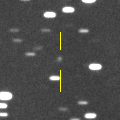
|
Now it is 17.4 mag (Dec. 28, Toshihiko Ikemura, Hirohisa Sato). It stays observable at 16.5 mag for a long time from 2020 to 2021. In the Northern Hemisphere, it is observable in excellent condition for a long time. In the Southern Hemisphere, it is not observable until 2021 summer.
Date(TT) R.A. (2000) Decl. Delta r Elong. m1 Best Time(A, h)
Feb. 8 0 55.74 72 51.6 6.383 6.538 94 17.5 20:35 (161,-28)
Feb. 15 0 57.58 71 46.4 6.438 6.518 90 17.5 20:26 (160,-29)
|

|
Now it is 18.0 mag (Jan. 29, ATLAS-MLO, Mauna Loa). It will brighten up to 13 mag in 2022. In 2020, it is observable at 17.5 mag in good condition in spring. It locates somewhat low in the Southern Hemisphere.
Date(TT) R.A. (2000) Decl. Delta r Elong. m1 Best Time(A, h)
Feb. 8 10 43.90 19 53.6 3.636 4.576 160 17.7 1:36 (180, 35)
Feb. 15 10 39.86 20 22.1 3.599 4.564 166 17.6 1:04 (180, 35)
|

|
Now it is 17.2 mag (Nov. 25, ATLAS-MLO). It brightened up to 14 mag from autumn to winter in 2018. Now it is fading. It is observable at 17.5 mag in good condition from winter to spring.
Date(TT) R.A. (2000) Decl. Delta r Elong. m1 Best Time(A, h)
Feb. 8 13 47.81 -3 1.3 3.913 4.380 112 17.7 3:52 (202, 56)
Feb. 15 13 45.97 -3 9.9 3.850 4.421 119 17.6 4:01 (184, 58)
|

|
Now it is 19.0 mag (Jan. 28, Mt. Lemmon Survey). It will brighten up to 17 mag and will be observable in excellent condition from March to May.
Date(TT) R.A. (2000) Decl. Delta r Elong. m1 Best Time(A, h)
Feb. 8 12 54.47 -6 27.6 1.502 2.204 123 17.8 3:45 (180, 62)
Feb. 15 12 57.77 -6 39.0 1.423 2.189 129 17.7 3:21 (180, 62)
|
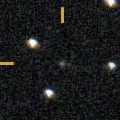
|
Now it is 17.7 mag (Jan. 24, ATLAS-MLO, Mauna Loa). It is observable at 17-18 mag for a long time from late 2019 to early 2021. It will fade out before it passes the perihelion.
Date(TT) R.A. (2000) Decl. Delta r Elong. m1 Best Time(A, h)
Feb. 8 2 55.73 4 9.2 5.011 5.013 84 17.7 20:35 (125, 34)
Feb. 15 2 58.26 4 44.6 5.105 5.000 78 17.7 20:26 (123, 31)
|
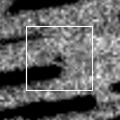
|
It is observable at 17.5 mag in good condition until spring.
Date(TT) R.A. (2000) Decl. Delta r Elong. m1 Best Time(A, h)
Feb. 8 16 59.03 -17 30.8 2.464 2.201 63 17.7 3:52 (268, 35)
Feb. 15 17 11.37 -17 42.1 2.414 2.226 67 17.7 4:01 (264, 40)
|
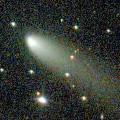
|
It brightened up to 11.4 mag in autumn (Nov. 10, Carlos Labordena). Now it is fading. It has already faded down to 16.3 mag (Feb. 3, ATLAS-MLO, Mauna Loa). It is observable in excellent condition in the Northern Hemisphere. It stays locating extremely low in the Southern Hemisphere.
Date(TT) R.A. (2000) Decl. Delta r Elong. m1 Best Time(A, h)
Feb. 8 3 47.85 39 33.4 1.652 2.123 104 17.7 20:35 (157, 11)
Feb. 15 4 0.66 39 1.3 1.770 2.171 100 18.1 20:26 (156, 11)
|

|
Now it is 17.5 mag (Feb. 3, ATLAS-HKO, Haleakala). It will be fainter than 18 mag in late April.
Date(TT) R.A. (2000) Decl. Delta r Elong. m1 Best Time(A, h)
Feb. 8 12 45.09 8 14.1 10.054 10.717 130 17.8 3:36 (180, 47)
Feb. 15 12 44.56 8 32.2 9.989 10.735 137 17.8 3:08 (180, 47)
|

|
It will be observable at 16.5-17 mag from spring in 2020 to summer in 2021.
Date(TT) R.A. (2000) Decl. Delta r Elong. m1 Best Time(A, h)
Feb. 8 19 54.65 19 36.5 5.806 5.105 41 17.8 3:52 (261,-22)
Feb. 15 19 56.91 19 38.1 5.758 5.082 43 17.8 4:01 (256,-15)
|
|
![]()
 C/2015 O1 ( PanSTARRS )
C/2015 O1 ( PanSTARRS ) 112P/Urata-Niijima
112P/Urata-Niijima A/2019 U6
A/2019 U6 C/2019 T3 ( ATLAS )
C/2019 T3 ( ATLAS ) 117P/Helin-Roman-Alu 1
117P/Helin-Roman-Alu 1 (944) Hidalgo
(944) Hidalgo 87P/Bus
87P/Bus 173P/Mueller 5
173P/Mueller 5 175P/Hergenrother
175P/Hergenrother 260P/McNaught
260P/McNaught C/2014 B1 ( Schwartz )
C/2014 B1 ( Schwartz ) C/2017 Y2 ( PanSTARRS )
C/2017 Y2 ( PanSTARRS )![]()






































